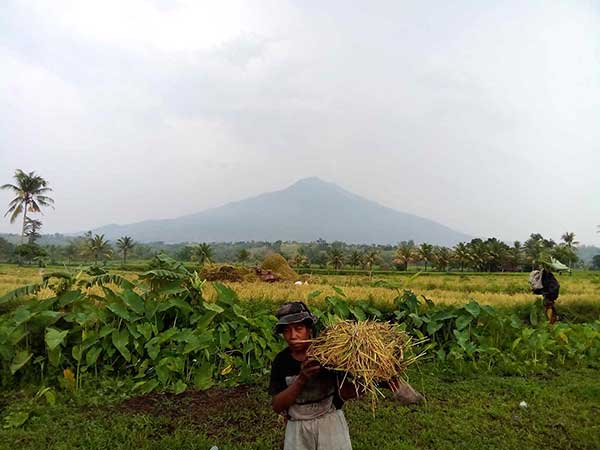
By Mariela Angella Oladive
The recent eruption of Mt. Kanlaon is expected to significantly impact the June inflation rate in Western Visayas, according to Philippine Statistics Authority Regional Statistical Services Office (PSA RSSO) 6 Statistical Specialist II Miguel Gallego.
The eruption, which occurred on June 3, is likely to affect the supply and prices of vegetables sourced from Negros, a key supplier in the region.
“In general, we can know what factors are influencing inflation, for instance, rice prices during the harvest season. This month, Kanlaon erupted. So, for June, we can expect inflation to be affected because the vegetable supply from Negros, which is substantial, might be disrupted. This could lead to higher prices,” Gallego explained.
Despite the creation of the new Negros Island Region (NIR) through Republic Act 12000, which President Ferdinand Marcos Jr. recently signed into law, Negros will still be included in the Western Visayas inflation report for June.
The NIR includes the provinces of Negros Occidental, Negros Oriental, and Siquijor.
Gallego further added that the separation of Negros Occidental from Western Visayas would have a future impact on regional inflation, given its significant contribution of 38.35 percent to the regional inflation rate.
Among the region’s provinces, Negros Occidental posted the lowest inflation at 4.2 percent, while Bacolod City recorded 4.5 percent. In contrast, Guimaras had the highest inflation rate at 7 percent, up from 6.8 percent.
Iloilo Province’s inflation rose to 4.7 percent from 3.9 percent, and Capiz to 4.4 percent from 3.9 percent. Aklan and Antique saw slower inflation rates, at 4.5 percent down from 4.9 percent, and 5.7 percent down from 6.7 percent, respectively.
Iloilo City saw inflation rise to 4.7 percent from 3.9 percent.
Notably, the inflation report highlighted significant increases in passenger transport by waterway and clothing.
Inflation for passenger transport by waterway surged to 79.6 percent from 22 percent, while clothing inflation rose to 3.6 percent from 3.4 percent.
Gallego attributed the high transport inflation to data from shipping lines but could not pinpoint the exact causes.
The rise in clothing and footwear inflation was linked to higher raw material prices and transportation costs.
“The prices posted by retailers are always subject to verification, and our office continuously monitors these prices,” Gallego said.
He advised consumers to be vigilant in their spending and check prices.
“Consumers need to strategize with their budgeting and set priorities,” he emphasized during a press conference on June 14.



















